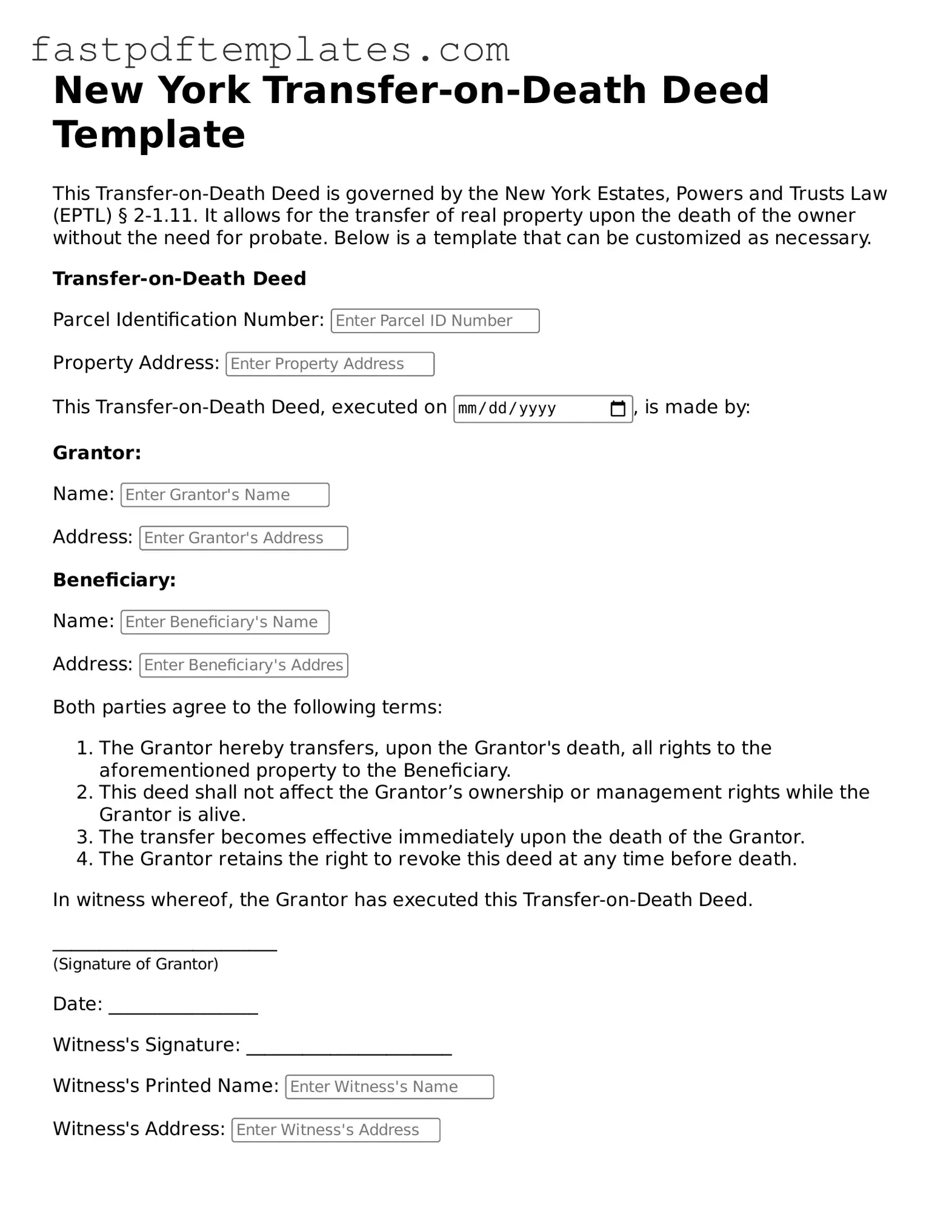The New York Transfer-on-Death Deed (TODD) is similar to a Last Will and Testament. Both documents serve to dictate the distribution of assets after an individual passes away. However, the key difference lies in the timing of the transfer. A Last Will and Testament takes effect only upon death and must go through probate, a legal process that can be lengthy and costly. In contrast, the TODD allows for a direct transfer of property to beneficiaries without the need for probate, simplifying the process and expediting the transfer of ownership.
Another document comparable to the TODD is a Living Trust. Like the TODD, a Living Trust facilitates the transfer of assets outside of probate. It allows the creator to manage their assets during their lifetime and specifies how those assets should be distributed upon their death. Unlike the TODD, a Living Trust can cover a broader range of assets, including personal property and financial accounts, and can also provide for management of those assets in the event of incapacity.
A Power of Attorney (POA) is also similar in that it designates someone to act on behalf of another individual. While the TODD focuses specifically on the transfer of real property upon death, a POA can grant authority for financial or legal decisions while the person is still alive. This document can be crucial in managing affairs if the individual becomes incapacitated, ensuring that their wishes are respected even before death.
The concept of Joint Tenancy with Right of Survivorship shares similarities with the TODD as well. In joint tenancy, two or more individuals hold title to property together, and upon the death of one owner, the property automatically passes to the surviving owner(s). This arrangement avoids probate, much like the TODD, allowing for a seamless transfer of ownership. However, joint tenancy requires co-ownership during the lifetime of the individuals involved, which may not suit everyone's needs.
A Beneficiary Designation is another document that aligns closely with the principles of a TODD. Commonly used for financial accounts such as retirement plans or life insurance policies, beneficiary designations allow individuals to specify who will receive their assets upon their death. This document avoids probate, similar to the TODD, and provides a clear directive for asset distribution. However, it typically does not apply to real estate, which is the primary focus of the TODD.
Lastly, a Quitclaim Deed can be compared to the TODD, as both involve the transfer of property ownership. A Quitclaim Deed allows one party to transfer their interest in a property to another party without any guarantees regarding the title. While it can be used during the owner’s lifetime, the TODD is specifically designed for posthumous transfers, providing a more structured approach to asset distribution after death. The Quitclaim Deed may be used in various scenarios, but it does not offer the same protections or clarity as a TODD regarding the intended beneficiaries.
